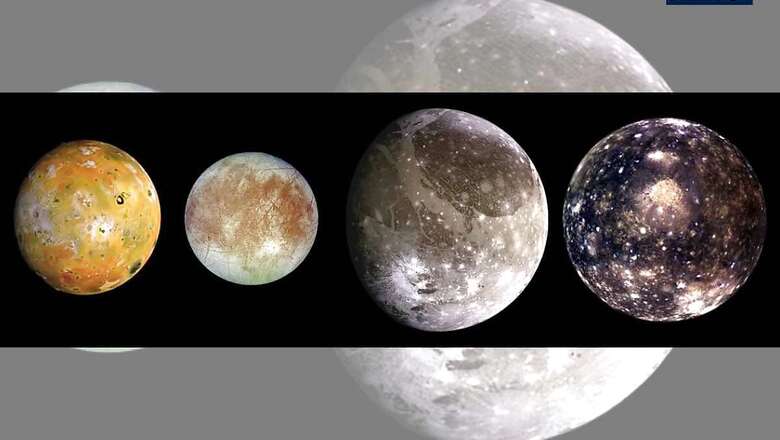
views
Jupiter could now be facing some of its own global warming issues. It turns out that Jupiter’s moons could be warming each other, in what is known as a process called tidal heating. This where Jupiter and its moons interact with each other during gravitational tugs which sees the planet and the moon exert pressure in either direction. Till now, it was believed that the planet itself was responsible for the tidal heating process, but the newest research indicates that moon to moon interactions are responsible for the heating up. The new study published in the Geophysical Research Letters suggest that some of Jupiter’s otherwise icy moons contain interiors warm enough to host oceans, which means liquid water.
“Maintaining subsurface oceans against freezing over geological times requires a fine balance between internal heating and heat loss, and yet we have several pieces of evidence that Europa, Ganymede, Callisto and other moons should be ocean worlds. Io, the moon closest to Jupiter, shows widespread volcanic activity, another consequence of tidal heating, but at a higher intensity likely experienced by other terrestrial planets, like Earth, in their early history,” says Antony Trinh, a postdoctoral research fellow in the Lunar and Planetary Lab and the co-author of the study, as reported by Phys.org.
The study says that when the tides generated by other objects in Jupiter’s moon system match each moon’s resonant frequencies, the moon will start to heat up. This results in melting of ice or rock internally. These tides can raise more heating than the tides raised by Jupiter. “Basically, if you push any object or system and let go, it will wobble at its own natural frequency. If you keep on pushing the system at the right frequency, those oscillations get bigger and bigger, just like when you’re pushing a swing. If you push the swing at the right time, it goes higher, but get the timing wrong and the swing’s motion is dampened,” says Hamish Hay, now a postdoctoral fellow at the Jet Propulsion Laboratory in Pasadena, California. He is the lead author of the study.
Another study led by Edward Ashton from the Department of Physics and Astronomy at the University of British Columbia, suggests that Jupiter may have as many as 600 small irregular moons orbiting it.



















Comments
0 comment